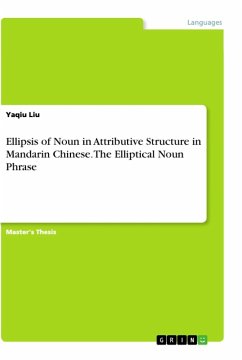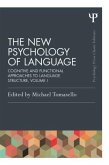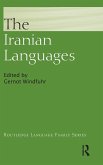Master's Thesis from the year 2015 in the subject Orientalism / Sinology - Chinese / China, Université Paris-Sorbonne (Paris IV) (UFR Langue française), language: English, abstract: In this paper, we will present an analysis of the phenomenon of the ellipsis of head noun in attributive structure, known as elliptical noun phrase (NP) in Chinese, on a semantic and syntactic level. Simply speaking, elliptical NPs in Chinese are expressions which have the distribution of NP but lack an overt noun and are made up of one or several modifiers, such as pronouns, demonstratives, adjectives, numerals and classifiers. This type of construction is found in many languages.We can observe that the semantic relations between the attributive and the head noun vary from one to another. In Part 1, we will introduce the attributive structure in Chinese and present a description of the semantic relations between attributive and head noun.The elliptical element in NPs in Chinese is always placed after "de". Therefore, the function of de plays an extremely important role in the ellipsis phenomenon in Chinese NPs. There are some controversial discussions on the function of de: ZHU Dexi believes that the nature of the construction of 'X de', according to the syntactic function, can be analyzed as adverbial phrase, adjective phrase and nominal phrase. Therefore de in this construction can be accordingly regarded as de1, an adjunct to adverbial phrase; as de2, an adjunct to adjective phrase; as de3, an adjunct to nominal phrase. However, HE Yuanjian considers that de can be possessive particle as well as structural particle depending on the context, which is obviously different from the opinion of ZHU Dexi.








